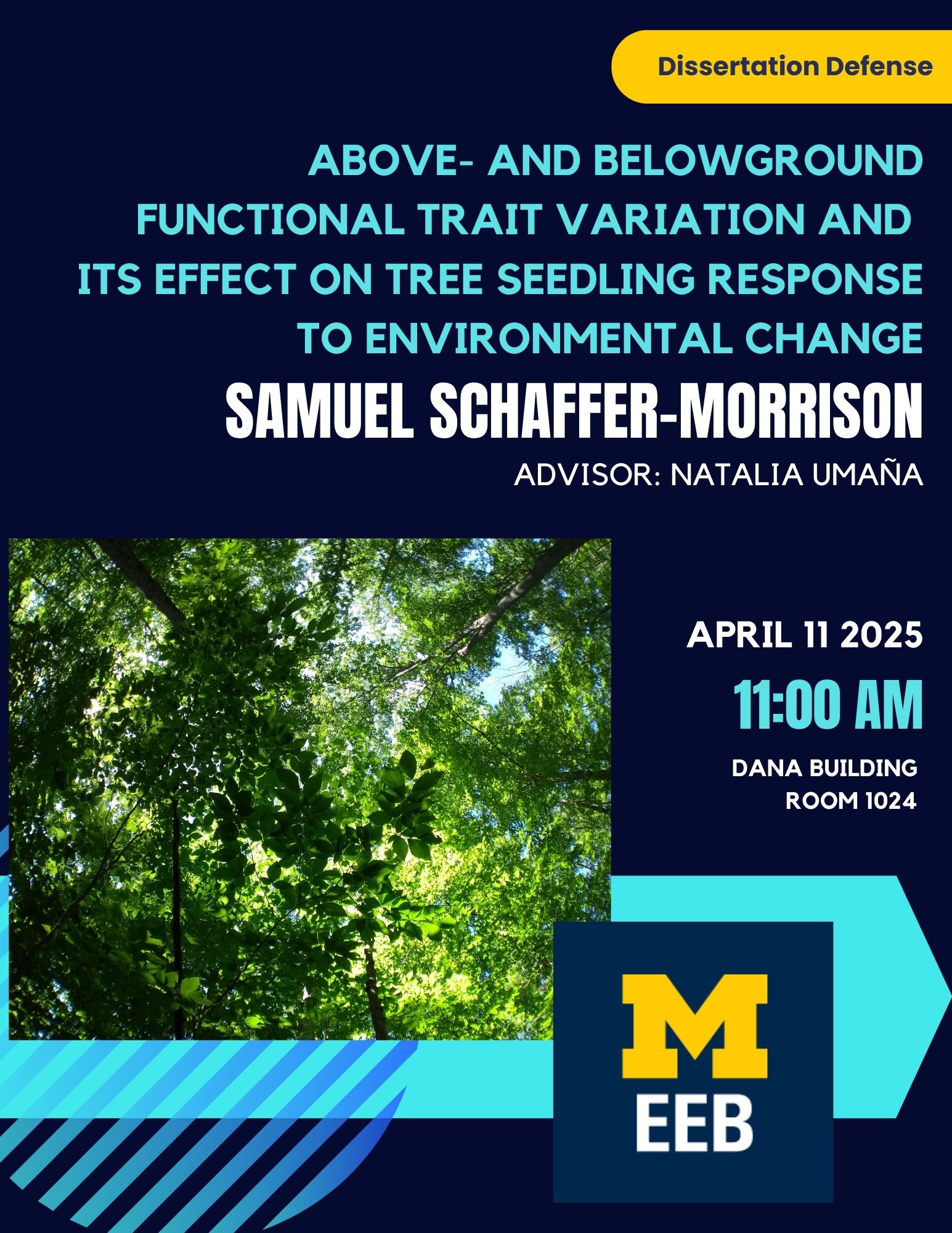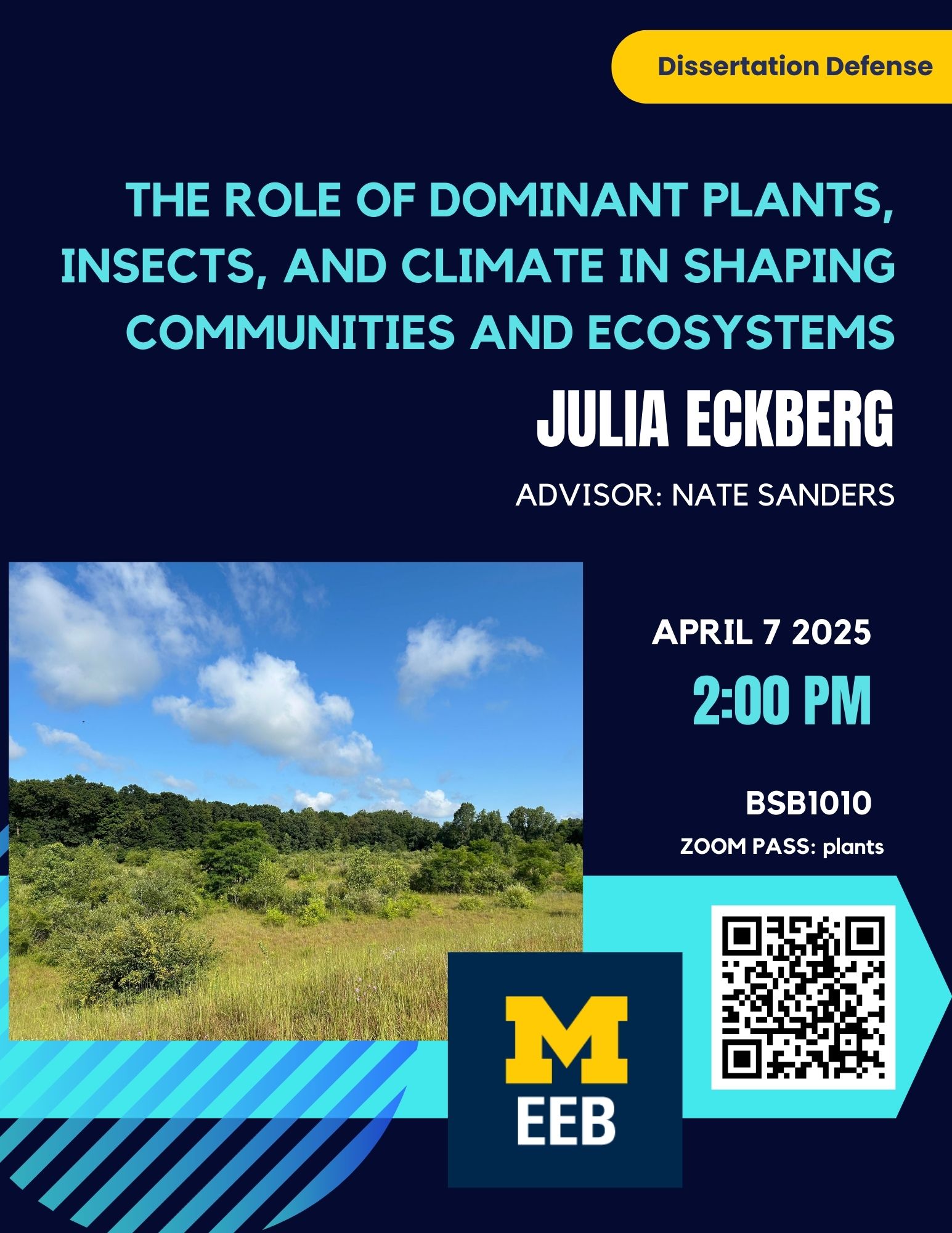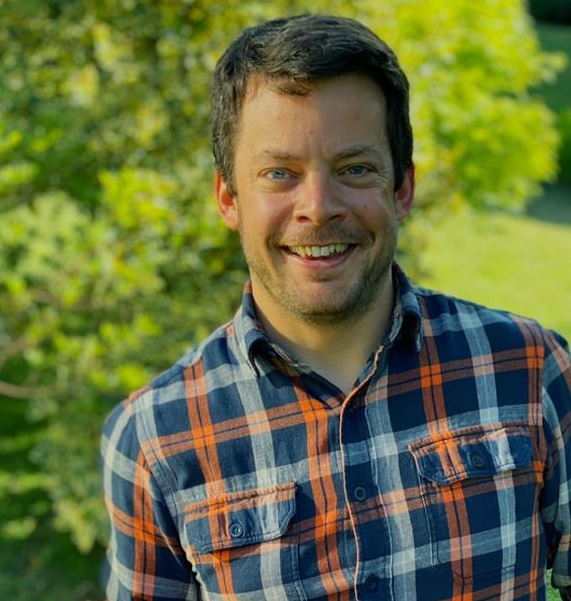Presented By: Ecology and Evolutionary Biology
EEB Student Thesis Defense - The Effects of Pteridium aquilinum (Bracken fern) on Understory Microclimate and Seedling Success in Temperate Forests
Aadia Moseley-McCloud

Title: The Effects of Pteridium aquilinum (Bracken fern) on Understory Microclimate and Seedling Success in Temperate Forests
Abstract: The understory influences biodiversity and ecological processes and are a defining element of forest ecosystems, as they can contain up to 90% of plant species in temperate forests. Bracken Fern (Pteridium aquilinum) often dominates forest understory communities globally, including those in Northern Michigan. Dominant understory species affect ecosystems proportional to their high abundance. To explore how bracken fern impacts microclimate, plant diversity, and seedling success, I asked two overarching questions: (1) how does natural variation in density of a dominant species impact understory abiotic conditions and plant diversity? (2) How does the cover and removal of a dominant species affect seedling survival and success? I established a bracken fern removal experiment in three forests at the University of Michigan Biological Station (UMBS). I paired plots where the bracken fern cover was left intact (natural) with plots where the bracken fern cover was removed (removal), across a gradient of bracken fern densities (0, 25, 50, 75 100% cover). Soil moisture and temperature varied across the gradient of bracken fern density in natural plots. At peak growing season, soil moisture variation was the highest in 50% natural plots. We did not detect a significant difference in seedling survival across the gradient of bracken fern density in either natural or removal plots. Seedling leaf area, specific leaf area, and leaf carbon-to-nitrogen ratios were not significantly affected by the removals. In 75% natural plots exclusively, removal had a negative effect on seedling green leaf % N. Our results highlight that dominant understory species differentially influence understory microclimate and seedling traits in temperate forests, but their impact is not proportional to cover. Instead, bracken fern cover may be both facilitative and inhibitory for seedling growth and establishment, showcasing the dynamic role of dominant species in temperate forests.
This is a hybrid event.
Join remotely: https://umich.zoom.us/j/93842698134
Meeting ID: 938 4269 8134
Abstract: The understory influences biodiversity and ecological processes and are a defining element of forest ecosystems, as they can contain up to 90% of plant species in temperate forests. Bracken Fern (Pteridium aquilinum) often dominates forest understory communities globally, including those in Northern Michigan. Dominant understory species affect ecosystems proportional to their high abundance. To explore how bracken fern impacts microclimate, plant diversity, and seedling success, I asked two overarching questions: (1) how does natural variation in density of a dominant species impact understory abiotic conditions and plant diversity? (2) How does the cover and removal of a dominant species affect seedling survival and success? I established a bracken fern removal experiment in three forests at the University of Michigan Biological Station (UMBS). I paired plots where the bracken fern cover was left intact (natural) with plots where the bracken fern cover was removed (removal), across a gradient of bracken fern densities (0, 25, 50, 75 100% cover). Soil moisture and temperature varied across the gradient of bracken fern density in natural plots. At peak growing season, soil moisture variation was the highest in 50% natural plots. We did not detect a significant difference in seedling survival across the gradient of bracken fern density in either natural or removal plots. Seedling leaf area, specific leaf area, and leaf carbon-to-nitrogen ratios were not significantly affected by the removals. In 75% natural plots exclusively, removal had a negative effect on seedling green leaf % N. Our results highlight that dominant understory species differentially influence understory microclimate and seedling traits in temperate forests, but their impact is not proportional to cover. Instead, bracken fern cover may be both facilitative and inhibitory for seedling growth and establishment, showcasing the dynamic role of dominant species in temperate forests.
This is a hybrid event.
Join remotely: https://umich.zoom.us/j/93842698134
Meeting ID: 938 4269 8134



